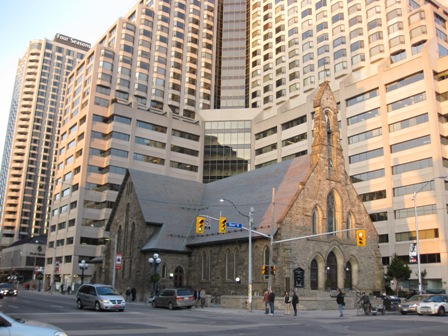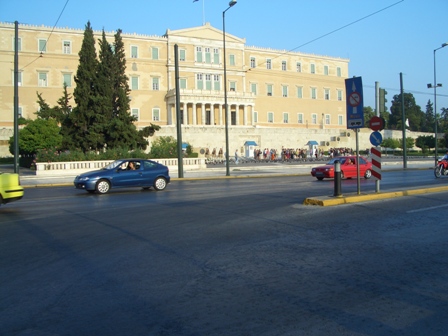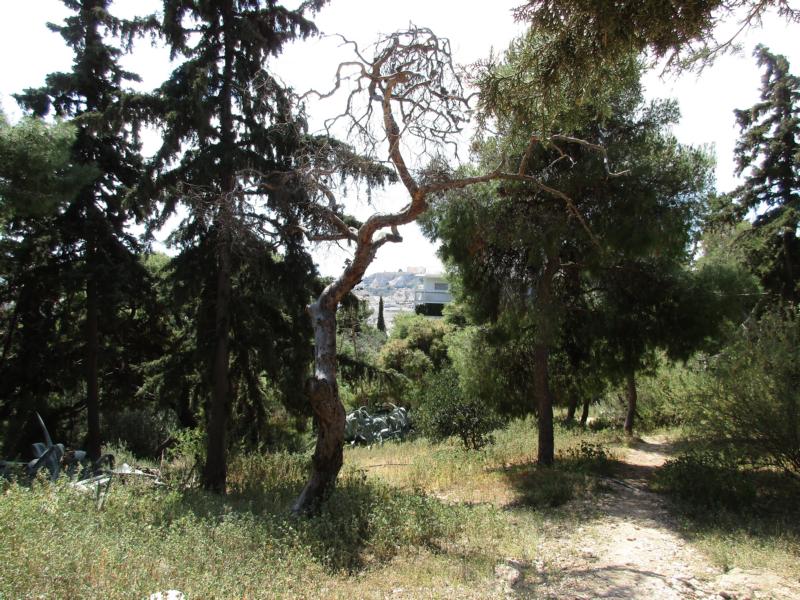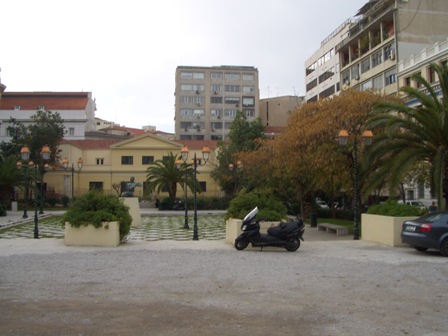6. Constructed realities and spaces
|
Human Matrix |
Mapping of Cultural resources |
Cultural planning |
Implementation |
Recommendations |
|
6. Constructed realities and spaces |
6.1 Architecture |
6.2 Visions |
6.3 Dialectic between old and new – aesthetical guidelines and proper use of materials |
6.4 Public Truth and Public Space: epistemological orientation of a city |
6. Constructed realities and spaces
Constructed realities take away old spaces (e.g. a high rise building where there used to be an empty plot of land) but create also new ones (e.g. roof top garden). All of them are not to be handled at the level of mere appearances even though they come and go in the consciousness of people crossing over them or never coming upon them for some time. Different activities and circumstances influence the experiences people make of the city they live in or else they visit, but in all cases architecture, vision, the dialectic between the old and the new leads up to seeking an orientation. If it means entering a public debate in a public space, then that becomes more than a simple occurance of meanings adding something to the experience made. At times these can be demonstrations or political protests which alter the significance of the day and event. At other times, these are truly historical moments e.g. when everyone waited on Syntagma square to know if the Olympic Committee had selected Athens to host the Games in 2004 after having failed to do so before that and when it could have coincided with the historical date when the new games were reinvented. The latter is signified by the Olympic stadium built at that time, by now more than one hundred years ago.
Even though some cities display their lack of courage by allowing power to create huge squares for military parades, they seek other places and squares to put local history on display. For instance, Moscow’s Red Square has seen many military parades of the Red Army with the entire politbureau looking on in the past while in recent years it was Putin as long as he was still president. In Beijing there was the wish for more freedom expressed by students brutally suppressed at the Tiananmen Square (Beijing has besides that square other well known places like the Bird’s Nest Olympic Stadium or the Temple of Heaven along with a modern skyline showing the growing power of China). Horrific memories evoke the Koenigsplatz in Munich as the square was used by Hitler to parade the troops. Always this demonstration of power repeats the same mistake as it tries to wipe out differences while celebrating the authority of power itself. If not troops march by, then entire school classes as if the future generations are already trimmed to buckle under such display of power. Such squares have a specific lay out and stand out since not usually daily live takes place there but only when heroic moments are meant to be remembered for largely symbolic and ideological reasons.
6.1 Architecture
With the building having become a message, and not just a container of people omitting daily messages by living, working and moving about, then Bilbao has set a trend.
It is not easy to link architectural history to what is finally built in a city. The character of buildings is something else. Often prizes awarded influence architectural schools since what counts is what sells or receives a prize. That makes many architectural schools redundant before they could bring their students to any kind of mature reflection about building and their impacts upon people. The lesson of proportion is but just small aspect. There are other aspects to be taking into consideration.
For instance, prizes divide and quite often drive ideas about architecture into the wrong direction
For example:
The European Commission and the Fundació Mies van der Rohe announced the finalists for the European Union Prize for Contemporary Architecture – Mies van der Rohe Award 2009, one of the most important and prestigious prizes for international architecture. By supporting the Prize, the European Commission underlines the role of architecture as a driver for creativity and innovation and draws attention to the important contribution of European professionals in the development of new ideas and technologies.
The finalists are:
- Multimodal Centre – Nice Tramway, Nice (France) by Marc Barani / Atelier Marc Barani
- Zenith Music Hall, Strasbourg (France) by Massimiliano Fuksas, Doriana Fuksas / Massimiliano Fuksas Architecture
- University Luigi Bocconi, Milan (Italy) by Shelley McNamara, Yvonne Farrell / Grafton Architects
- The Norwegian Opera & Ballet, Oslo (Norway) by Kjetil Træaedal Thorsen, tarald Lundevall, Craig Dykers / Snøhetta
- Library, Senior Citizens’ Centre and City Block Core Zone, Sant Antoni’s District, Barcelona (Spain) by Rafael Aranda, Carme Pigem, Ramon Vilalta / RCR Aranda Pigem Vilalta Arquitectes
The European Commissioner for Education, Training, Culture and Youth, Mr. Ján Figel’ said: “Each of the projects selected today show that investing in European architectural talent, in creativity and innovation pays off. Stimulating new ideas and highlighting entrepreneurial efforts are also a key part of the European Year of Creativity and Innovation 2009. I am particularly pleased to see that the series of lectures about these finalist projects will be given by the architects themselves in Barcelona on April 22, in order to reach out to broader audiences. The winner of the Mies van der Rohe Award will be announced later on May.”
The finalists were selected from 340 projects proposed by the Architects’ Council of Europe member associations and the other national architectural associations and the Advisory Committee. The Jury, chaired by Francis Rambert includes: Ole Bouman, Irena Fialová, Fulvio Irace, Luis M. Mansilla,Carme Pinós and Vasa J. Perović.
Francis Rambert, Chair of the Jury said today: “We were impressed by the quality of the selected projects, many of which explore important urban issues of infrastructure and regeneration, developing new typologies. Ranging widely in scale, each responds imaginatively to its particular context and brief.”
Previous winners include, among others, Rem Koolhaas and Ellen van Loon, Zaha Hadid, Dominique Perrault, Peter Zumthor, Rafael Moneo, Álvaro Siza Vieira, Lord Foster and Luis M. Mansilla – Emilio Tuñón.
The European Union Prize for Contemporary Architecture – Mies van der Rohe Award 2009, funded through the EU Culture Programme, is awarded biennially to works completed within the previous two years. The Jury also awards a Special Mention Prize for emerging architect.
A traveling exhibition on the Prize winners, Emerging Architect Special Mention, Finalists and Shortlisted Works is planned for September this year.
The EU Culture Programme also funds the European Border Breakers Awards, the European Union Prize for Cultural Heritage and the forthcoming European Union Prize for Literature.
Another example:
Centre of Contemporary Art Znaki Czasu in Torun.
The first completely newly built venue dedicated to contemporary art in Poland since 1939
Poland
The mission of the Centre of Contemporary Art Znaki Czasu in Torun is to develop, propagate and promote contemporary art. The CoCA aims to be a modern and dynamic centre of artistic fervour through establishing a regional art collection, a spectrum of open exhibitions, publishing and educational activities, stimulating support for art and contributing to art market development.
Considering the complex and interdisciplinary character of today’s artistic phenomena, the CoCA’s programme comprises various spheres that contemporary art draws upon, such as music, dance, theatre, film, architecture or design and offers space for an open dialogue and discussion on the most important aspects of contemporary art.
The Centre of Contemporary Art was raised in 2006 – 2008 by the City of Torun District with the funds obtained from the European Union’s Integrated Regional Development Operational Programme, as a part of the National Culture Programme Znaki Czasu (Signs of Time) launched by the Ministry of Culture and National Heritage.
Source: Centre of Contemporary Art Znaki Czasu in Torun
The newsletters ”Interesting and important from Central Europe” are prepared by the administrators of the national networks in the framework of AHICE.
A wonderful site on contemporary Greek architecture in Athens!
http://www.culture2000.tee.gr/ATHENS/ENGLISH/main2.html
6.2 Visions
Visions for a city expressed through landscapes by surrounding buildings come rarely. The Olympics in Athens 2004 created such an opportunity but it was hardly used. Only some interesting interventions were made but the main Olympic stadium can hardly be seen from the Kifissia avenue, the main road passing by.
On the other hand, the most successful project has been the unification of the archaeological sites. Its main contribution has been to free the area surrounding the Acropolis from cars and making visible again a hunch of what the landscape may have looked like in the past when besides the temple only the trees spending shade determined the character of place.
6.3 Dialectic between old and new – aesthetical guidelines and proper use of materials

The old and the new in Toronto, Ontario, Canada
Both Bertold Brecht and Th. W. Adorno recommended a city should not build only something new but instead continue to develop out of a dialectic of old and new. Adorno went so far as to say “the new is sick because it seeks only the new and therefore is forced to flee back into old structures”. That holds certainly in a consumer society which seeks only the new whether as a car or a space to be experienced. Yet the continuity of identity is something not so easily upheld if a city clings only to the past or else builds merely on the green meadow as if cultural heritage is only an obstacle to those who wish to realize new building concepts.
When it comes to linking architectural features of a city to some aesthetical guidelines leading on to proper use of materials e.g. brick rather than cement or other typical features of the locality and region such as a kind of balcony or staircase, then this principle of old and new becomes crucial for another reason. It has to do with how memory works. People tend to project upon the facades of buildings many impressions. Studies have revealed buildings with many ledges offer not only to pigeons but also to those memory projections places to rest. By contrast modern very slick buildings let these memory projections simply slide off so that nothing is retained when the person would return to the same spot and tries to remember.
Of great interest is, therefore, what Michael Kimmelman observes in his article about the new ‘Neue Museum’ of Berlin. It is located on the museum island and which has a special meaning for many reasons. For until the fall of the Berlin Wall buildings in East Berlin showed the bullet wounds inflicted once the Second World War ended in Berlin. The bullet wounds inflicted during those last fights are like scars. They should not be completely vanished just as the ‘Gedaechtniskirche’ or Memorial church in West Berlin is a reminder of what kind of destruction war does entail once these deadly forces are unleashed. For Michael Kimmelman praises the architect David Chipperfield to have made a million decisions when reconstructing the destroyed building, thereby incorporating the past in the present and therefore ongoing new modulation of what has become a fantastic reconstruction. Here should be reminded that for a long time the philosopher Juergen Habermas opposed ‘lessons of materials’ by claiming ‘the reconstruction of the past’ was impossible. Thus in such an attempt two principles converge: a listening to what people said about the vanishing of the old, of history by the loud newness of the West once East Berlin was taken over by the West German government and as said a modulation towards making the experience of space into a new magic.
Neues Museum in Berlin [1]
For more photos see http://www.nytimes.com/slideshow/2009/03/12/arts/design/20090312-abroad-slideshow_index.html
6.5 Public Spaces and Public Truth: epistemological orientation of a city
Any public square gives orientation. Like Syntagma or Omonia Squares in Athens, they are central meeting places easy to be reached and in the vicinity of two important functions marking the city: the Greek Parliament pertaining to Syntagma (the Greek word for 'constitution) and the Omonia square linked to the central market place and town hall of Athens on Athinas Street linking Omonia to Monostiraki with the Acropolis towering at the end of that road and above Monostiraki square.
Greek Parliament at Syntagma Square
View of Acropolis at the end of Athinas
Otherwise many public squares end up being just plain and often a waste of space since nothing happens there to invite people to develop there their own activities.
[1] Michael Kimmelman, „Vestiges of war in a new Neues Museum“http://www.nytimes.com/2009/03/12/arts/design/12abroad.html?pagewanted=1&_r=1
« 5. Cultural worlds | 7. Orientation: living, traveling and strangers coming into town »



